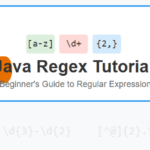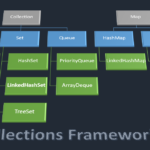The evolution of natural language processing has taken a significant leap with the advent of frameworks like the GPT (Generative Pre-trained Transformer) prompt framework. This article delves into the intricacies of the GPT prompt framework, explores the importance of optimization techniques, and highlights the art of prompt engineering, showcasing how these elements combine to unlock the true potential of language models.
This article is structured into multiple sections to streamline the stages involved in creating a domain-based AI assistant using RAG and prompt engineering.
- Amazon Bedrock: Revolutionizing Generative AI Applications
- Developing a Spring Boot Application with Amazon Bedrock API
- Leveraging Amazon Titan with Spring Boot: A Guide to Generating Embeddings
- Navigating the Vector Database Universe with Spring Boot and MongoDB
- The Art of Prompt Engineering: Optimizing GPT Models for Enhanced Performance
The GPT Prompt Framework
The GPT prompt framework is built on the transformative power of large-scale language models. Models like GPT-3, developed by OpenAI, are pre-trained on vast datasets, enabling them to understand and generate human-like text. The prompt, essentially an input query or instruction, becomes the gateway through which users interact with these language models, extracting information, generating creative content, or solving complex tasks.
The GPT prompt framework allows developers and users to harness the vast capabilities of language models through a simple yet powerful interface. By crafting effective prompts, users can prompt the model to perform tasks such as text generation, summarization, question answering, and more. The flexibility of the prompt framework lies in its adaptability to a multitude of applications, making it a versatile tool in the hands of developers.
Understanding Prompt Engineering
Prompt engineering involves the strategic construction of prompts or input instructions to elicit specific and desired responses from language models. It plays a pivotal role in guiding the behavior of LLMs, enabling users to influence the quality, relevance, and coherence of the generated outputs. As the capabilities of LLMs continue to advance, prompt engineering has become an indispensable tool for leveraging the full potential of these models.
Significance of Prompt Engineering
The significance of prompt engineering lies in its ability to empower users to extract optimal performance from GPT models. By crafting well-structured and contextually relevant prompts, users can steer the model towards generating responses that align with their specific requirements. This not only enhances the precision and accuracy of the model’s outputs but also enables users to tailor the responses to diverse use cases, ranging from content generation and summarization to question answering and conversational interfaces.
Optimization Strategies
Prompt engineering encompasses a range of optimization strategies aimed at eliciting better responses from GPT models. OpenAI’s guide to prompt engineering lists six high-level strategies for optimizing prompts, with a particular focus on examples for GPT-4. These strategies include:
- Write Clear Instructions: Crafting unambiguous and precise prompts that effectively communicate the desired task or query to the model.
- Provide Reference Text: Furnishing relevant reference material or context to guide the model’s understanding and response generation.
- Split Complex Tasks: Breaking down intricate tasks into simpler subtasks, enabling the model to process and respond to each component more effectively.
- Give the Model Time to “Think”: Allowing the model sufficient time to process and generate responses, especially for complex or resource-intensive tasks.
- Use External Tools: Leveraging external resources or tools to enhance the model’s understanding and aid in response generation.
- Test Changes Systematically: Methodically evaluating and testing different prompt variations to gauge their impact on the model’s outputs
Parts of Prompt
- Role: Explaining the AI the role its need to play.
- Example: You are acting as Subject Matter Expert (SME) named GURU, created for Company UROCK. Your goal is to clarify any functional or technical queries related to UROCK company domain by referring to provided context.
- Tone: Adding a personality to the assistant ai.
- Example: Your response should be short and friendly in nature.
- Context or document data: Including the context in prompt results in domain specific response and reduce hallucinations.
- Example: Here is the document embedded between XML tags <document> </document>. <document> Relevant data returned from search</document>
- Task: Explain the task the assistant ai have to perform.
- Example: Here is the user question. <question>Where can we check claim status?<question>
- Example: Here is the user question. <question>Search the referred document and return the application name.<question>
- Rules: Lay down the rules for assistant ai.
- Example: Follow these rules. <rule>Always represent your self as GURU<rule><rule>Provide responses using context/document data only<rule><rule>Do not elaborate the context<rule>
- Example: Sample example of prompt and expected response could be provided.
- History: Prior chat history could be included in the prompt
- Output Format: Define the response template.
- Title:
- Response:
- Document Reference Links:
Generating polished prompt is a iterative process. The first step is to create a use case, and prepare preliminary prompt. Them test and refine it iteratively until desired outcome is achieved.
Prompt Frameworks
- R-T-F: Role Task Format
- T-A-G: Task Action Goal
- CARE: Context Action Result Example
- RISE: Role Input Steps Expectation
The Role of Prompt Engineering in GPT Models
In the context of GPT models, prompt engineering serves as a linchpin for maximizing the utility and accuracy of the model’s responses. By employing tailored prompt engineering techniques, users can harness the full potential of GPT models for diverse applications, including content creation, language translation, information retrieval, and conversational interfaces. The iterative process of refining prompts in collaboration with GPT models enables users to fine-tune the model’s outputs, address specific use case requirements, and achieve more nuanced and contextually relevant responses.
Conclusion
In conclusion, prompt engineering stands as a pivotal practice for optimizing the performance of GPT models and other large language models. By employing strategic prompt construction and optimization strategies, users can steer the behavior of these models towards generating more accurate, relevant, and contextually coherent responses. As the field of natural language processing continues to evolve, prompt engineering will remain a cornerstone for unlocking the full potential of GPT models and other LLMs.
The practice of prompt engineering is poised to play a central role in shaping the future of natural language processing, enabling users to extract maximum value from advanced language models and tailor their capabilities to diverse use cases and applications.
Frequently Asked Questions:
What do prompt engineers do?
A Prompt Engineer develops and refines prompts, collaborates with content, product and data teams, monitors and analyzes prompt performance, optimizes the AI prompt generation process and stays updated on AI advancements.
What is the basic of prompt engineering?
Elements of a Prompt
- Instruction: It is a statement tasking the model to perform something.
- Context: Context is what streamlines the model to the problem. …
- Input Data: It is the input as a whole single entity.
- Output Indicator: In role-playing, it indicates the type of output which will be a code.







Leave a Reply
You must be logged in to post a comment.